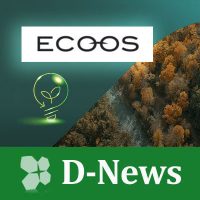For the next 10 years, the Distributed Energy Systems (DES) will grow significantly. We have investigated this industry and are introducing some highlights in this D-News. If you would like further details we can provide the full Point of View and we can discuss ways to support your business development needs.
Evolution
The energy industry and the way that we produce energy are in a period of rapid transformation. Scientists all over the world are looking for new methods and sources to produce energy.
The power generation market is seeing growth of small, decentralized, and renewable sources of power generation, called Distributed Energy Systems (DES).
Key points
Daydream, experts in B2B Market Access, realizes opportunities in this area and has created a “Point of View (PoV)” study which examines DES in more detail. The PoV explains various aspects of the market for DES including the technical challenges, statistics about the size of the market by region, key players in the market, and opportunities for innovation which may orient the R&D or marketing focus of our clients and prospective clients. The DES detailed in the PoV includes:
Biomass
Biomass includes power generation from a variety of materials including wood, agricultural residues, and animal and human waste. For example, according to a 2011 study by Platts, Europe and North America produced 18,300MW and 6,500MW of biomass connected to the energy grid, respectively.
Fuel Cells
Fuel cells convert chemical energy into electricity through a reaction with oxygen or another oxidizing agent. A study in 2011 by the US Department of Energy states that worldwide fuel cell shipments grew 37.5% between 2010 and 2011 and over 200% between 2008 and 2011 and we anticipate significant growth in the future.
Small Scale Wind Turbines (SWT)
Residential scale SWT produce 300W to 10,000W. The World Wind Energy Association reports that:
- The total SWT installed in 2011 amounted to 730,000 units;
- By 2020, the total new SWT installations will reach capacities of 1GW per year and the cumulative total of all existing SWT will reach 5GW.
Photovoltaic (PV) Solar Panels
There are multiple generations of technologies for PV solar panels, all of which are based on technology that converts solar radiation into direct current (DC). (Value chain and typical materials for construction are studied in the PoV).
Solar Thermal Energy (STE)
STE involves the generation of heat by harnessing and concentrating the energy from the sun. China is the leader in STE technology with 65% of the market share. The rate of new installations of STE peaked in 2008 with the decreasing installation rate due to the financial and economic crisis. However, this field is seeing cumulative capacity growth each year and constant innovation leading to scale optimization and hybrid solutions combining the use of STE with other technologies.
The future
Our understanding of the market is that:
- The DES market still has substantial room for growth.
- And growth drivers are:
- Cost and technology efficiency
- Innovation and development of new technologies to enhance the efficiency of existing systems and their integration into the power grid
The Value Creation Road will be focus on:
- The strategic use of chemicals, materials, electrical equipment and data computation to boost the performance of technologies in place
- Cross-market collaborations, joint-ventures, acquisitions and start-up development
DES project
With 13 years of experience in the energy, chemicals, materials, and life sciences industries, Daydream has the experience and know-how to help our clients achieve their B2B market access goals. Daydream’s services include Market Assessment, B2B Business Development, Ideation Management, Training and Marketing Strategy study.
To request Daydream’s Point of View report on the Distributed Energy Systems (DES) market, or for further information about Daydream’s services, please send an email to:
contact@Daydream.eu or your Daydream sales contact.









